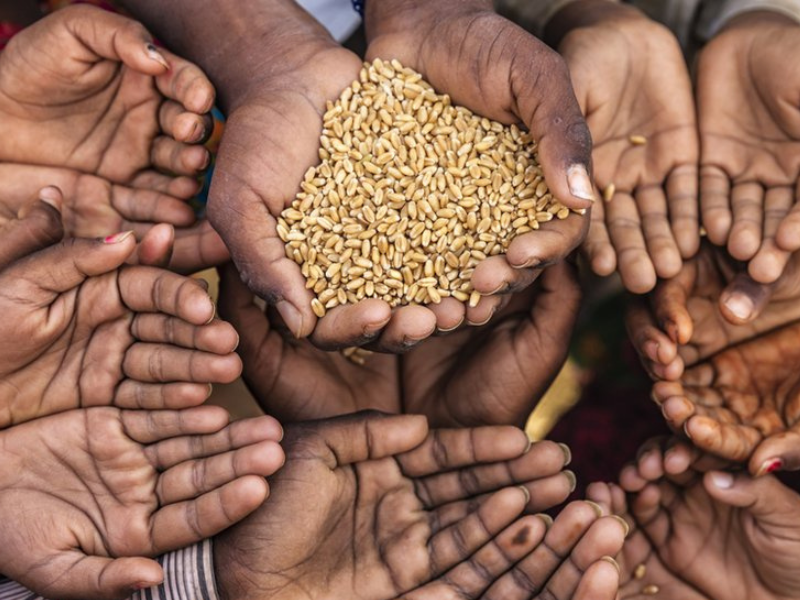
The COVID crisis, territorial conflicts, climate crisis and rising prices have all contributed to 828 million people worldwide facing a threat of famine in 2022. The number of people already facing acute hunger across the world has increased from 135 million to 345 million since 2019.
While the demand for food increases, the supply capacity is reaching its worst levels. According to data from the World Food Program (WFP), US$ 24 billion are needed to supply about 153 million people in 2022 and many countries do not produce enough for their own consumption.
According to the UN, the acute hunger crisis is caused by a combination of four factors:
In underdeveloped regions of the southern hemisphere, taking from the mouths of the already hungry to feed the hungry has become a common practice, leading to increased migration of people, economic destabilization and conflicts.
Russia’s war with Ukraine is hitting global food trade that has already been hampered by COVID-19, climate change, and now exacerbated by the energy crisis.
As well as gas supplies, Russia has been using food shortages as a weapon of war, with Ukraine’s grain and seed exports virtually paralyzed and Russia’s threatened. Together, the two countries contribute about 12% of the world’s food trade. They account for about 28% of wheat, 29% of barley, 15% of corn and 75% of sunflower oil consumed worldwide. Ukraine’s food exports feed 400 million people. Its pastures, damaged by the war, are full of corn and barley and the farmers have nowhere to store their crops, which could lead to the loss and impossibility of planting a new crop for a new crop, due to the lack of labor and raw materials.
Fertilizers also suffer from international marketing difficulties. Limiting farmers’ access to fertilizers directly impacts food production.
If the war between Russia and Ukraine continues, which it has proved to be, and the food supply of these two countries remains limited, hundreds of millions more people could fall into poverty.
But it’s not just Russia’s invasion of Ukraine that contributes to rising global hunger.
Climate change also directly affects the growing conditions of crops in many countries around the world.
Wheat prices, which have risen 53% since the start of the year, jumped another 6% in May after India suspended grain exports due to an alarming heat wave. In addition to extreme temperatures, the lack of rain threatens new planting, impacting the supply of regions around the world.
China, the biggest producer of wheat, has signaled that the lack of rainfall in 2021 led to the worst 2022 crop in recent times.
The Somali region is being ravaged by its worst drought in four decades.
All this has a serious effect on the underdeveloped population. Households in emerging economies spend 25% of their budgets on food — and in Africa, up to 40%. In many importing countries, governments cannot increase subsidies to feed their populations due to the already high public debt.
Despite rising grain prices in these regions, farmers in other parts of the world may not be able to make up the shortfall. One reason is that food prices are volatile. And with rising fertilizer and energy prices, farmers’ profit margins are shrinking. Fertilizers and energy are farmers’ main costs; and both markets are under severe turmoil.
Rising prices for basic foodstuffs have already raised the number of people at risk of hunger from 440 million to 1.6 billion.
Many countries produce food as a commodity and not as a subsidy, as it can be produced on a large scale and stored without losing quality, in addition to helping to reduce the public debt and boost the economy. Here, grains such as soy, wheat, corn, in addition to coffee stand out. And the pandemic has helped make commodity farming even more attractive.
In addition, many foods are used to produce biofuel or to feed animals. According to the UN, around 18% of vegetable oils go into biodiesel and 10% of all grains are used to make biofuel and 13% for dry pet food.
The global hunger crisis is so severe that subsidies for conventional food production are unlikely to fully solve the problem.
Technological innovations in agriculture are of utmost importance. Seeds and crops that adapt to climate change and resist agricultural pests must be designed. An increase in agricultural production through the use of modified seeds, modified fertilizers and pesticides could be a solution.
Agroecological intervention alternatives such as the development of seed banks, composting systems to promote soil health, pesticides that do not depend on chemicals and computational models that can measure the loss of crops caused by diseases or pests, can serve as innovative solutions . Over time, these approaches could reduce the high demand for investments and could create increasingly resilient agricultural systems.
Infrastructure also plays a key role in this scenario. Without adequate infrastructure, food and fertilizers cannot be distributed. And the construction and maintenance of this infrastructure directly depends on the initiative of governments that are currently struggling to contain the public debt, expanded by the COVID-19 crisis.

Beatriz Canamary is a consultant in Sustainable and Resilient Business, Doctor and Professor in Business, Civil Engineer, specialized in Mergers and Acquisitions from the Harvard Business School, and mom of triplets. Today she is dedicated to the effective application of the UN Sustainable Development Goals in Multinationals.
She is an ESG enthusiast and makes it possible to carry out sustainable projects, such as energy transition and net-zero carbon emissions. She has +15 years of expertise in large infrastructure projects.
Member of the World Economic Forum, Academy of International Business and Academy of Economics and Finance.